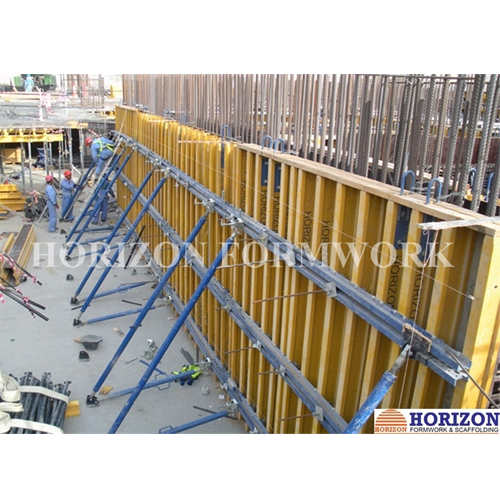Oct . 16, 2024 09:46 Back to list
Manufacturers of Unbanded Scaffolding Boards and Their Key Features and Benefits
The Importance of Unbanded Scaffolding Boards in Construction
In the realm of construction, safety, efficiency, and reliability are paramount. Among the essential components that facilitate these aspects are scaffolding boards. Among various types of scaffolding boards, unbanded scaffolding boards have gained particular popularity. This article explores the significance of unbanded scaffolding boards, the factors influencing their use, as well as considerations for selecting reputable manufacturers.
What are Unbanded Scaffolding Boards?
Unbanded scaffolding boards, as the name suggests, are boards used in scaffolding that do not have metal bands or edges to reinforce their structure. Typically made from high-quality timber, these boards are designed to support workers and materials at various heights during construction activities. Unlike their banded counterparts, unbanded boards offer certain advantages in flexibility and usability, making them a preferred choice in various scenarios.
Advantages of Unbanded Scaffolding Boards
1. Weight and Portability Unbanded scaffolding boards tend to be lighter than banded boards because of the absence of additional metal fixtures. This makes them easier to transport and handle on-site, which can significantly enhance productivity during the setup and dismantling phases of construction.
2. Cost-Effectiveness With fewer materials involved in their manufacture, unbanded scaffolding boards are often more economical than their banded alternatives. This cost-effective nature can make a significant difference, particularly in large-scale projects where budget constraints are a concern.
3. Environmental Impact Many manufacturers of unbanded scaffolding boards prioritize sustainable practices. These boards are generally crafted from responsibly sourced timber, minimizing environmental impact. Choosing unbanded boards can align construction practices with modern ecological standards.
4. Versatility Unbanded scaffolding boards can be utilized across various building projects, from residential constructions to commercial developments. Their adaptability makes them a practical choice for contractors who require equipment that can cater to diverse work conditions.
Factors Influencing the Use of Unbanded Scaffolding Boards
1. Building Regulations and Standards Before deciding on using unbanded scaffolding boards, it’s crucial to understand local building codes and regulations. Compliance with safety standards ensures the safety of workers and prevents legal complications, which may arise from using non-compliant materials.
unbanded scaffolding boards manufacturers

2. Load-Bearing Capacity It is essential that the unbanded boards selected are capable of supporting the anticipated loads. Manufacturers often provide specifications that indicate the maximum load these boards can handle. Ensuring that boards meet the structural requirements is indispensable for maintaining safety on-site.
3. Durability The choice of materials used in the manufacture of unbanded scaffolding boards can affect their longevity. High-quality timber that is treated for resistance to weather, pests, and decay can prolong the lifespan of the boards, leading to better overall investment returns for construction companies.
Selecting Reputable Manufacturers
When considering unbanded scaffolding boards, it is crucial to select manufacturers with a proven track record in the industry. Here are some key points to consider
- Quality Assurance Look for manufacturers who adhere to strict quality control measures. Certifications and compliance with industry standards can be indicators of a reliable supplier.
- Reviews and Recommendations Seeking feedback from previous customers can provide insight into a manufacturer’s credibility. Online reviews and personal recommendations from industry peers can serve as valuable resources.
- Customer Support A reputable manufacturer should offer excellent customer support to address inquiries about products, safety practices, and other concerns.
- Warranties and Guarantees Check if the manufacturer provides warranties or guarantees on their boards, as this can be an indicator of their confidence in product quality.
Conclusion
Unbanded scaffolding boards play an integral role in modern construction, offering a combination of safety, efficiency, and cost-effectiveness. By understanding their advantages and considering various factors—such as regulations, durability, and manufacturer selection—construction companies can optimize their scaffolding solutions. With careful consideration and a focus on quality, unbanded scaffolding boards can contribute significantly to the success of any construction project.
-
High-Quality U Head Jack Scaffolding – Reliable Scaffolding Jack Head Manufacturer & Factory
NewsJul.08,2025
-
High-Quality I Beam H20 Leading Timber Beam H20 Material Factory, Exporters & Manufacturers
NewsJul.08,2025
-
High-Quality Powder Coating Steel Formwork - Durable & Corrosion Resistant Solutions
NewsJul.07,2025
-
Inclined Column Formwork Supplier – Durable & Precise Solutions for Unique Structures
NewsJul.07,2025
-
High-Quality Water Stop Solutions Trusted Water Stop Company & Suppliers
NewsJul.07,2025
-
High-Quality Formwork Material Supplier Reliable Manufacturer & Factory Solutions
NewsJul.06,2025